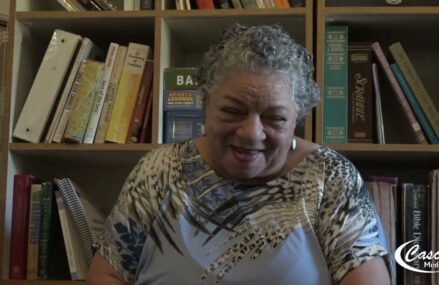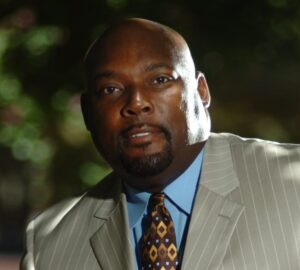
In my last article, I talked about how Sexy Red and other entertainers are on demon time. I discussed how the music industry is being used to desensitize, demoralize, and demonize the masses through song. But there’s more to this story, and it’s time to dig deeper into the science behind it all. I submit to you that music isn’t just entertainment—it’s a force; a weapon that can be wielded for good or evil. What I’ve come to comprehend is that it all comes down to vibration, frequency, and the power of words.
Let’s start with the basics. Everything in the universe vibrates at a certain frequency, including us. These vibrations are powerful enough to affect our thoughts, emotions, and even our physical health. Ancient cultures understood this, which is why music and sound have always played such a central role in spiritual practices. The ancients stated, “as medicine is for the body, music is for the soul.” The right frequency can unlock the divine within us, but the wrong one? It can unleash the beast. Consider the story of King Saul and the young David who played on his harp to rid the king of his evil spirit in i Samuel 16.14-23. Music in that sense was used for healing. Anybody familiar with tuning forks and sound therapy, something my wife does, knows about the power of frequency and sound.
Understanding this dynamic, it should be clear for us to see that music, as a frequency and sound, is a force—a powerful, and almost mystical force, that has the ability to shape our thoughts, emotions and even our destinies. Over the years, I’ve come to know this, and the more I delve into the science of vibration and frequency, the more I see how deep this truth about music goes. I’ve since concluded that music isn’t just entertainment; it’s a weapon, one that can be wielded for good or evil.
Moses Maimonides, in his profound work The Guide for the Perplexed, touches on the concept of the Music of the Spheres—a celestial harmony that permeates the universe. This idea that everything vibrates at its own frequency resonates deeply with me. Every sound, every word, carries a vibration that has the potential to influence our inner world. When I consider this, I realize how powerful music truly is. It’s not just about the melody or the beat; it’s about the frequency at which it vibrates, the messages it carries, and how it impacts us.
Think about it: when we listen to music, we’re allowing those vibrations to enter our minds and bodies, affecting us on a subconscious level. Spells, in a way, are cast through music—whether it’s the uplifting energy of a song that makes us feel invincible or the dark, heavy tones that can drag us down into negative states of mind. The messages embedded in music can touch the subliminal aspects of our minds, influencing how we think, feel, and even act.
Vibration and frequency are also closely tied to the concept of chakras, the 7 energy centers within our bodies which are part of our central nervous system. Depending on the frequency of the music we listen to, we can either unlock divine potential or unleash the beast within. High-frequency music can align with our higher chakras, leading to enlightenment, clarity and spiritual growth. Low-frequency music, on the other hand, can resonate with our lower chakras, fueling base desires, anger and fear. The lyrics, too, play a crucial role. Positive, uplifting words can elevate our consciousness, while negative or harmful lyrics can bring us down, impacting our psyche in ways we might not even realize.
I’ve experienced this firsthand. When I played football in college, I had specific playlists to get me hyped up, to tap into that aggressive energy needed to compete at a high level. Those songs had a certain intensity that resonated with my lower chakras, giving me the drive and focus to dominate on the field. But when it came to matters of the heart, I’d make slow jam tapes for my love interest, mixing songs that resonated with the heart chakra, invoking feelings of love, connection and intimacy. The vibrations of those love songs had a completely different effect, unlocking the softer, more vulnerable side of me.
I also used to teach middle and high school students about the profound impact of music, not just as an art form, but as a powerful force that shapes culture and consciousness. I would show them videos that peeled back the layers of the industry, revealing how it operates behind the scenes. One of the most eye-opening resources I used was the Sackcloth and Ashes series on Satan in the music industry. These videos offered a stark perspective on how music is often used as a tool for manipulation and control, opening the students’ eyes to the deeper, often darker forces at play. It was fascinating to see them connect the dots and begin to question the music they consumed, understanding it as more than just entertainment, but as a medium with the power to influence minds and spirits.
Knowing this, the students came to see that music isn’t just about personal experiences; it’s also a tool for social change. As I introduced to them artists like Bob Marley, Fela Kuti, Public Enemy, Rage Against the Machine, and Lauryn Hill who have all harnessed the power of music to attack corruption, injustice, and oppression, they’re vision began to expand. They could see how Bob Marley’s music was a weapon for peace and unity, spreading messages of love and resistance against the forces of division and hate. They heard how Fela Kuti’s Afrobeat was a rallying cry against political corruption and human rights abuses in Nigeria. They felt Public Enemy’s revolutionary rap gave voice to the anger and frustration of marginalized communities, challenging the status quo and demanding change. They were moved by Rage Against the Machine’s explosive sound was a direct assault on systemic injustice, while Lauryn Hill’s soulful melodies and introspective lyrics caused them to question societal norms and inspired some to spiritual awakening.
I shared with them how these artists understood that music is more than just a collection of notes and rhythms; it’s a force that can mobilize people, challenge authority, and inspire revolutions. We talked about how they used their platforms to cast spells of liberation, awakening the consciousness of their listeners and pushing them to question the world around them. When I see those students who were in my class and received the lessons, the message still resonates with them as they see music for more than what it is presented as.
As I have reflected on the role music plays in our lives, I can’t help but feel a sense of responsibility to challenge and enlighten when give the chance. I always share with others how the music we choose to listen to, the vibrations we allow into our minds and bodies, shape our reality. I firmly believe that we must be mindful of the frequencies we tune into, recognizing that music has the power to unlock both the divine and the beast within us. So let’s choose wisely, using this powerful force for good, to elevate our consciousness and the world around us. Music is a weapon—let’s listen to and wield it with intention and purpose.
If you have any comments or questions about the article, email me at [email protected]


